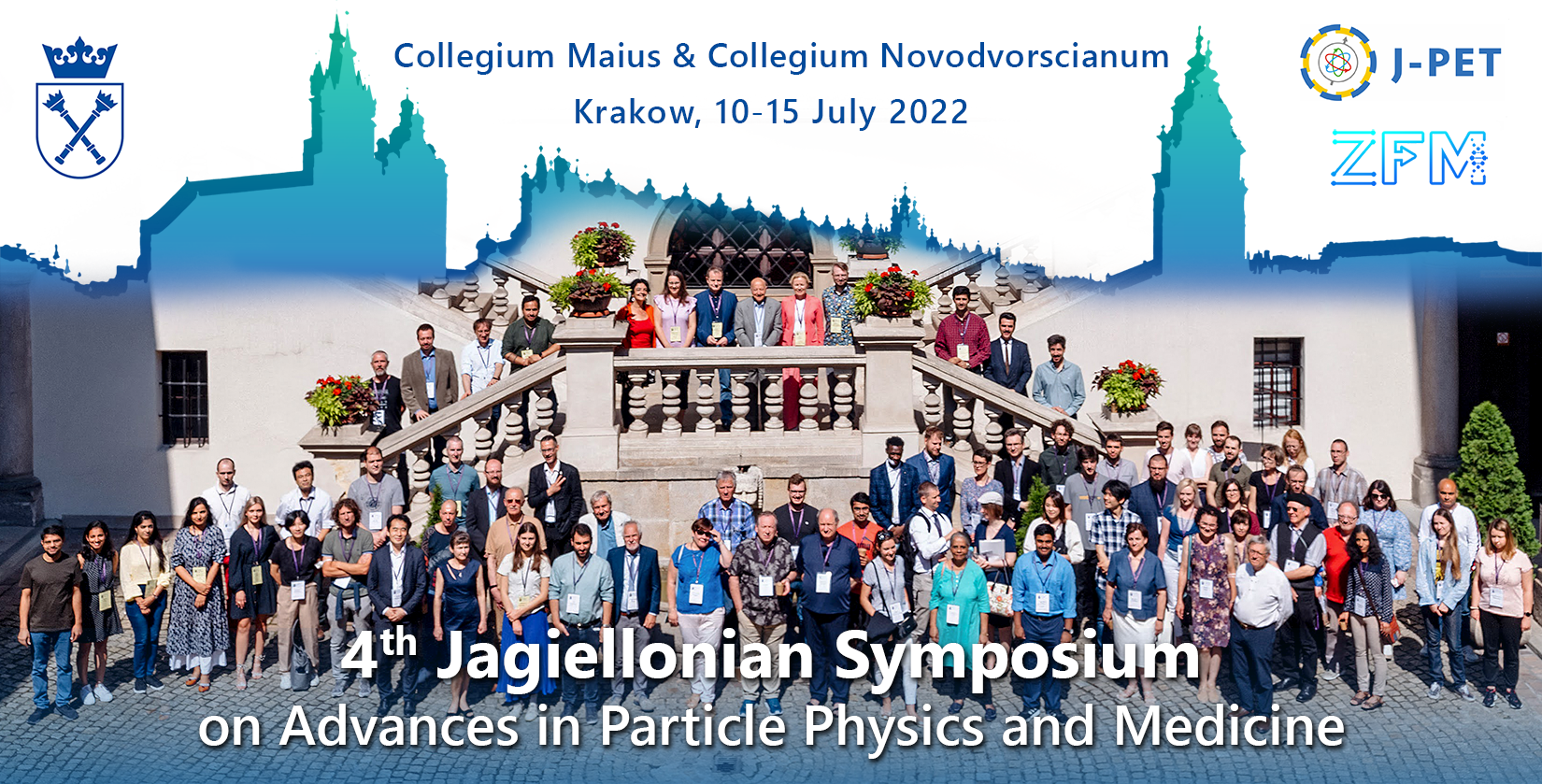Speaker
Description
Author: Agata Tobola-Galus
Co-authors: Jan Swakoń, Paweł Olko
Purpose
In spatially fractionated proton therapy SFTP (proton grid therapy) the arrays of parallel and pencil proton beams generated by grid collimator are applied to reduce the impact of irradiation on healthy tissue. At the beam entrance the locally irradiated skin benefits from the ununiform profile of beam causing faster repair of irradiated tissues. In the same time, due to the multiple Coulomb scattering of the proton beam, the target volume can be uniformly irradiated. In this paper, use of proton grid therapy is considered designe Spread-Out Bragg Peak (SOBP) at the target depth. The aim of these studies was dosimetry verification produced grid collimator and range modulator to form uniform SOBP for spatially fractionated proton beams.
Material and Methods
The experimental verification of the depth dose distribution was performed at the eye proton therapy unit with 60 MeV proton beam from AIC-144 cyclotron at IFJ PAN Krakow. Mesh-like brass collimators with the lateral centre-to-centre (c-t-c) spots distances of 2 mm (spot diameter 1 mm were prepared were prepared. A spread out Bragg peaks (SOBP) of half modulation (from 1.5 cm to 3 cm-depth in water) and full modulation were formed by specially designed for this collimator range modulators. ProBImS scintillator system with a CCD camera were placed at several depths in a solid-water slab phantom to evaluate the relative 2-D dose distribution. As a figure of merit, the ratio between the central dose of one minibeam (peak dose) and the dose in the middle of two consecutive beams (valley dose) was evaluated. This magnitude, named peak-to-valley dose ratio (PVDR), is a very relevant parameter in such spatially fractionated techniques. The dosimetry was complemented by measurements of the depth dose distribution performed in water phantom using the Markus ionization chamber and 2D-TLD in the solid phantom.
Results
Our results show that for parallel beams 1 mm in diameter with c-t-c 2 mm, the optimal distance of the collimator from the eyelid surface is 35 mm, obtaining an almost uniform dose in the target and satifiable values of PVDR (3-5) in the region of the beam entrance. A decrease in the PVDR value is observed with increasing distance of the phantom from the collimator. Changing the distance of the measurement system from the grid collimator (snout) affects the shape of the dose depth distribution. The differences are not large, mainly an increase of the dose at the entrance, and negative slope of the plateau are observed.
Conclusions
Spatially fractionated proton therapy SFPT (proton grid therapy) is being considered for the treatment of eye tumors. A favorable dose distribution at the beam entry would allow the eye to be irradiated through closed eyelid sparingly due to spatial fractionated dose.
Designing range modulator wheels to SOBP for parallel proton min-beams with energy of 60 MeV, and diameter of 1 mm were found to be sufficient achieve homogeneous irradiation of the target and to obtain a flat plateau SOBP with full and half modulation.
The results of this work can be used to guide future radiobiological experiments using artificial skin.
This project has received funding from the European Union's H2020 Research and Innovation Programme, under Grant Agreement No: 730983

